Avocados are widely loved for their smooth texture and flavorful taste. They are versatile ingredients used in many dishes, from guacamole to smoothies. Occasionally, when slicing open an avocado, you may observe that the flesh has developed a brown color. This can be concerning, as brown flesh may indicate that the avocado is spoiled or unsafe to eat. This article will explore the causes and risks of brown avocado flesh and whether it is safe to consume.
What Causes Brown Avocado Flesh?
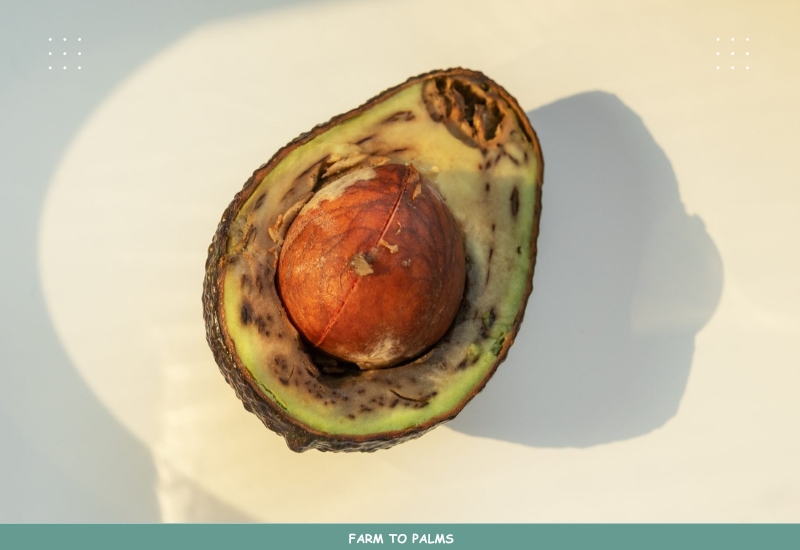
When you slice open an avocado and observe a brown discoloration on the inside, it is usually caused by enzymatic browning. Enzymatic browning occurs when the fruit’s enzymes react with oxygen in the air. This reaction causes the flesh to darken and develop a brown or grayish hue.
Several factors contribute to enzymatic browning in avocados:
Enzymes
Avocados contain enzymes called polyphenol oxidase (PPO) and peroxidase, which are responsible for browning. When the fruit is cut or exposed to air, these enzymes come into contact with oxygen, triggering the browning reaction.
Oxygen Exposure
Avocado flesh undergoes a process of oxidation when exposed to oxygen, resulting in a brown discoloration. Cutting, slicing, or mashing avocados exposes their flesh to air, accelerating the browning process.
Temperature
Enzymatic browning occurs more quickly at room temperature than in colder conditions. Refrigerating avocados can slow down the browning process.
Bruising or Damage
Bruised or damaged areas on an avocado are more susceptible to browning because the enzymes are exposed to oxygen at these points.
Is Brown Avocado Flesh Safe to Eat?
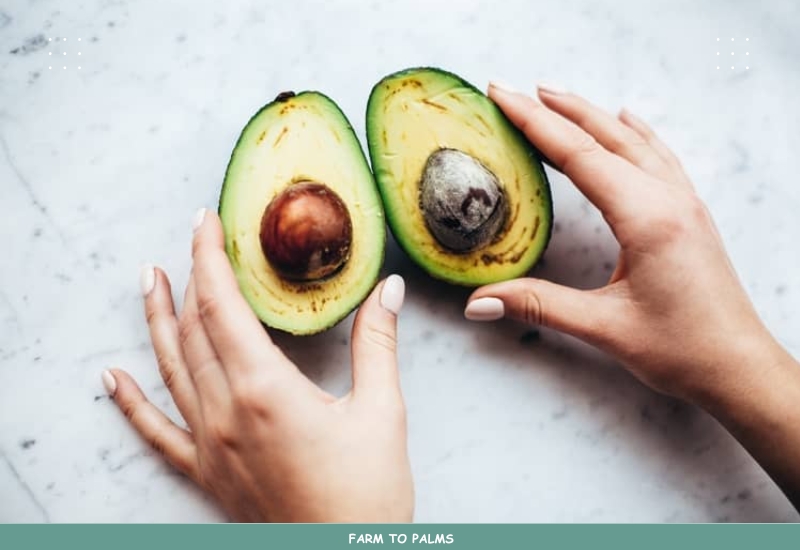
The brown tinge in an avocado doesn’t necessarily make it unsafe to eat. In most cases, it is primarily a superficial concern and does not impact the flavor or overall excellence of the fruit. Avocado flesh that has turned brown is still edible, and many people consume it without issue.
Nevertheless, there are several factors to consider:
Flavor and Texture
While browned avocado is safe to eat, it may have a slightly altered flavor and texture. Browning can produce a somewhat mushy or overripe texture and a more intense flavor.
Odor
If an avocado has turned brown due to overripeness or spoilage, it may emit an off-putting odor. Trust your sense of smell; if the avocado smells rancid or foul, it’s best to discard it.
Mold or Signs of Spoilage
Check for any visible signs of mold, unusual discoloration, or off-putting textures. If you notice these signs, avoiding eating the avocado is safer.
Allergies and Sensitivities
Some individuals may be more sensitive to avocado texture or flavor changes. You may avoid browned avocados if you have specific dietary preferences or sensitivities.
How to Prevent Brown Avocado Flesh
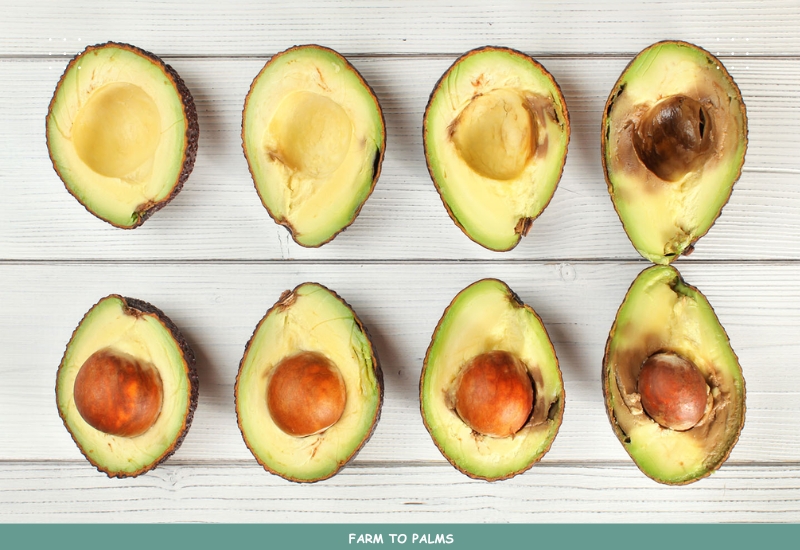
Preventing brown avocado flesh is essential because although it is not harmful, it can affect the appearance, flavor, and texture of dishes that include avocados. Here are some helpful tips to prevent browning:
Store avocados properly
It is unnecessary to rewrite the given statement as it is already clear and well-written. The original statement provides accurate information on how to store avocados properly. This can help prevent bruising and extend the shelf life of the fruit.
Use lemon juice
Lemon juice can help prevent enzymatic browning by slowing the oxidation process. Sprinkle lemon juice on cut avocados or mix it into guacamole to keep the flesh from turning brown.
Cover with plastic wrap.
Using plastic wrap to cover cut avocados can help prevent them from being exposed to oxygen and slow down the browning process.
Eat fresh
To maximize the freshness and ripeness of your avocados, it is advisable to purchase them from a trusted vendor and consume them promptly after cutting them open.
Salvaging Browned Avocado
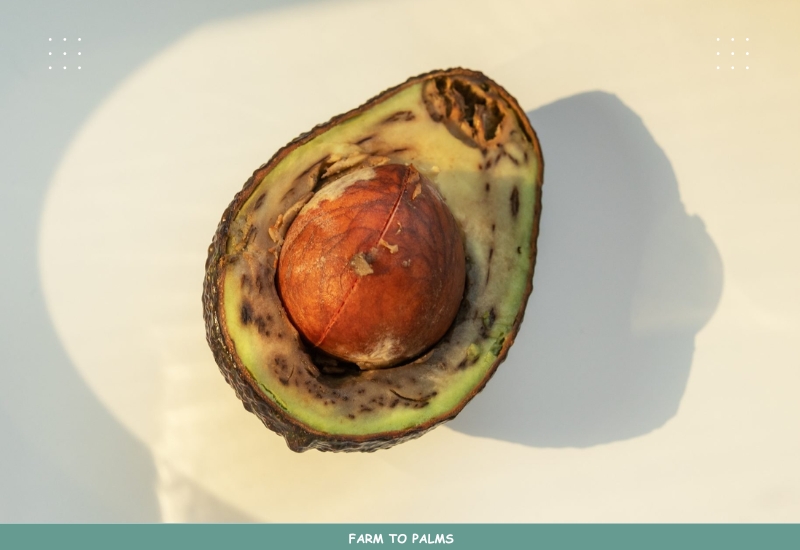
If you’re faced with an avocado with some brown areas that are still primarily green and firm, you can salvage the good parts and enjoy the fruit. Here’s how:
Cut Away Browned Areas
Use a knife to cut away the browned portions of the avocado carefully. Start by slicing off the top and bottom, then carefully remove the browned areas around the edges. What remains should be green and edible.
Check for Freshness
Inspect the remaining green flesh for any signs of spoilage, mold, or unpleasant odors. If it looks and smells fresh, it’s likely safe to eat.
Use Immediately
Once you’ve salvaged the green portions, use them immediately in your recipe or meal. Exposure to air will continue the browning process, so it’s best to consume the avocado immediately.
Preventative Measures
To prevent further browning of the unused portion, place it in an airtight container, cover it with plastic wrap, or sprinkle it with lemon or lime juice. The browning process can be slowed down by the presence of citric acid in the juice, as it inhibits the enzymes that are responsible for causing browning.
Tips for Preventing Avocado Browning:
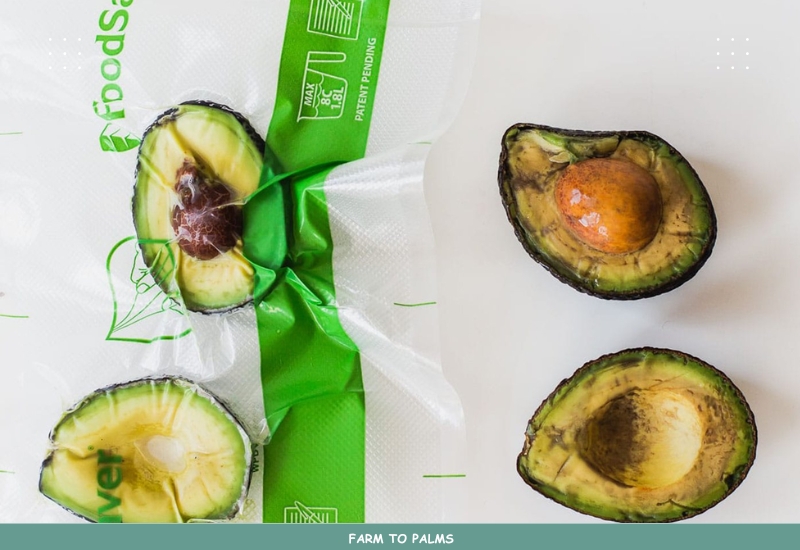
Preventing issues with avocados is often the most effective approach. Below are some suggestions to ensure your avocados remain fresh and delicious:
Select Ripe But Not Overripe Avocados
When buying avocados, choose ripe but not overly soft ones. Overripe avocados are more prone to having browned flesh.
Store Properly
Store unripe avocados at room temperature until they ripen. Refrigerating them can help extend their freshness once they are ripe. Cold temperatures slow down the enzymatic browning process.
Use Citrus Juice
Brush the exposed flesh with lemon or lime juice to prevent browning when using only a portion of an avocado. The acidity helps inhibit enzymatic browning.
Keep the Pit
If you only use half of an avocado, store the other half with the pit intact. The presence of a pit can impede access to oxygen and decelerate the browning process.
Store in an Airtight Container
If you have leftover avocado, store it in an airtight container to minimize oxygen exposure.
Use Plastic Wrap
Covering the cut surface of an avocado with plastic wrap can create a physical barrier to oxygen.
Consider Refrigeration
If you have a cut avocado you won’t use immediately, consider wrapping it tightly in plastic wrap and refrigerating it to slow down browning.
Eat Promptly
Cut or mashed avocado flesh should be used immediately to minimize browning. The longer it’s exposed to air, the more it will darken.
Conclusion:
In summary, an avocado with a brown tinge on the inside is generally safe to eat as long as the discoloration is limited and the surrounding flesh remains unaffected. By understanding the ripening process, differentiating between natural browning and signs of spoilage, and implementing preventive measures, you can thoroughly relish the delicious and nutritious advantages of incorporating avocados into your meals.
By understanding the ripening process, differentiating between natural browning and signs of spoilage, and implementing preventive measures, you can thoroughly relish the delicious and nutritious advantages of incorporating avocados from Farm to Palms supermarket into your meals.

